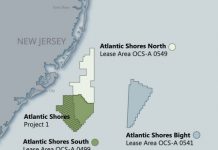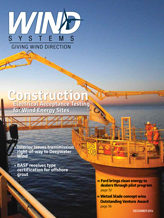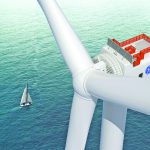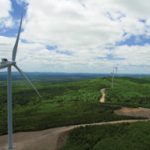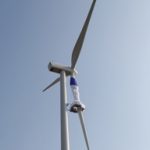A robust domestic wind industry requires a well-qualified and trained workforce to design, maintain, and install wind energy projects across the country. As wind becomes a larger part of our nation’s clean energy mix, the need for skilled individuals to support this growing industry will increase. While the wind industry already employs over 50,000 people across the United States, the Department of Energy’s National Renewable Energy Laboratory found in a recent study that at least 70% of industry members surveyed report some difficulty finding qualified applicants for a variety of wind-related positions including wind technicians, managers in manufacturing and construction, scientists, regulators, product designers, educators, and trade workers. Figure 1
In an effort to support the wind industry’s recruitment of skilled workers, the Energy Department has developed a – “Wind Career Map,” a web-based tool that highlights the broad range of careers and required skill sets across the wind power industry. The occupations featured in the Wind Career Map range from technicians who install and maintain wind turbines to educators who will train the next generation of wind engineers and business leaders. Information such as wages, experience expectations, and educational requirements are available for each mapped occupation, and one of the most exciting features of the Career Map is an associated career pathway that can successfully lead to each position.
Utilizing the Career Map’s built-in matching feature, interested individuals can locate positions based upon relative skill sets and levels of knowledge. For instance, if you were to match your “moderate experience” with a career in “Installation and Operations,” you may find that you are qualified to be an assembler and fabricator. The Career Map informs you that people in this position “assemble both finished products and the parts that go into them,” and that a high school diploma is the preferred level of education to qualify for this role. If you are intrigued by the job description and think that it may be a good fit, the Wind Career Map points you to more detailed information. For example, the Career Map tells you that assemblers and fabricators must have color vision and be able to read detailed schematics or blueprints that show how to assemble a machine and use various electronic, robotic, computer, or hand tools to make adjustments to align and fit components together properly. Figure 2
Developed by a working group of experts including industry representatives, educators, government agencies, and wind energy activists, the Wind Career Map will help develop the next generation of employees needed to support America’s growing land-based, distributed, and emerging offshore wind industries.
Interested in other renewable energy sources? The Energy Department also developed a Solar Career Map. To see if a renewable energy career may be right for you, visit the or Energy Department’s Clean Energy Jobs and Career Planning website, or visit the Wind Program website to learn more about wind energy trends, technology, manufacturing, educational tools, and ongoing research and development.
— Source: U.S. Department of Energy
















